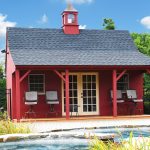My father used to pay me a penny for every dandelion that I dug up out of his lawn. He was a post-war suburban homeowner, anxious to remove those blights from the carpet of green he worked so hard to create. His penny could not be had without the entire root of the plant. Just pulling out the leaves was not worthy. The plant had to be pulled up and out, never to be seen again. For that, he taught me the proper way to dig up a dandelion, using a tool similar to a long curved knife but with a pointed, forked end that looked something like a devil’s tail. I loved the opportunity and found that in no time at all I could earn a dollar, which was good money back then for a ten-year-old.
My parents were not rural folk so they likely had never heard that some people further out in the country enjoyed dandelion greens at the dinner table. Or perhaps they had heard of it but I’m sure would never indulge or even think of doing such a thing, even in hard times. For them, vegetables came from the garden, or from a can. Anything picked from the wild was suspect, though I don’t know suspect of what. Today, anyway, wild is preferable to domesticated, as in my memory, those dandelions growing on my father’s lawn would have been riddled with all kinds of toxic lawn fertilizer and weed killers.
Recently I read that dandelion greens are selling for $9 a pound at trendy markets. Known in the trade as “yuppie greens,” purslane and lamb’s quarters have become just as desirable. It seems a very odd time to start charging high end prices for things that grow for free and were, for the most part, a cornerstone of survival for many during the Depression. Though it doesn’t seem like an odd time to start appreciating what grows in our yards and in the near forests. According to your own taste, there is an abundance of food out there that can be had for free.
For the record, I have tried dandelion greens but find them quite bitter and so I share my father’s view of them as a disposable weed. However, I have, over the years, sampled other wild edibles such as fiddleheads, ramps and milkweed shoots. Fiddleheads, the little curl of greenery that precedes the emergence of certain ferns, have never excited me. I know they have their fans and there is even a company in Maine that cans them and sells them on grocery store shelves. But, again, they seem dull to me, a little like vegetables that we were once forced to eat. Greens for greens’ sake. Plus, you need to work pretty hard to find a source of them and pick them just as the fern starts to unfurl. Timing is critical in the hunt for fiddleheads.
In the wild, I favor milkweed shoots and ramps. Milkweed shoots are easy, the only trick is getting to them when the shoots are ripe. Let them go by and they flower and then go into their poetic pods of late summer. The shoots can only be picked in the spring, like nipping back the basil or the zinnia, to keep it from going to seed. Nip those two young leaves in the center and you have the beginning of a wonderful meal. Milkweed shoots are like spinach only the leaves are more substantial, more rugged and if you add a bit of crumbled bacon after you have steamed them, you’ll find it the centerpiece of your plate. And, like other such plants, the more you pluck those center leaves, the more they come back.
Further, ramps are so desirable, at least in my view, that I had a dream about them recently. Ramps are sometimes confused with skunk cabbage as the leaves are similar but the roots are not. Ramps are actually wild leeks so if you pull up the whole plant, subterranean part and all, you get a nice white bulbous root that is sweet as any leek and good with anything you might add onions to — an omelet, a burger, draped over a roast as you tuck it into the oven, like that. Ramps, it should be known, grow wild near streams and in lightly wooded areas where sun might filter through. So they like damp and a bit of light.
I had found a likely patch beside the road, about a mile from here, and gone in to pull a few for my evening meal. But they are hard to pull and if you don’t employ a suitable tool (I think that such a tool would be the weeder my father used to uproot dandelions), the leaves tear off at ground level and you’ve lost the heart of the plant. So I went into that patch, all full of enthusiasm and sudden impulse but without the proper tool and I ended up with nothing but disappointment and sorrow that I’d interrupted the growth of these good congregants of the forest. That night, I dreamt that I walked into a field scattered with ramps that had already been uprooted. The leaves were a tender spring green, the roots bright white even down to the root tendrils. Perfect. And lots of them. They lay temptingly on the ground, ready to be scooped up. I was about to realize this easy harvest when I saw that I was sharing the field with a half dozen or so pigs who were the ones who had rooted up these ramps, or so I assumed. I thought that perhaps the pigs had contaminated the roots and reluctantly pulled myself back. I woke up feeling as frustrated as I had when I drove away from the ramps I’d yanked from their placid places beside the stream. I guess the moral of the story is that nothing comes easy. Except milkweed shoots. Watch for them before someone starts to charge $9 a pound for them.
Read more:
Annie B. Copps on Fiddleheads, Ramps





Oh, that tool-I call it ‘the almighty’ because I use it to uproot all the dandelions and other stubborn weeds that grow on our lawn and in our gardens. I don’t go out to weed without it!
I believe I’m the only one on the block, I assume to the dismay of my neighbors, who doesn’t soak my lawn with poison and do away with the dandelion and friends. I call it my Packers lawn – Green & Gold. I believe the in-trouble bees appreciate the feast that I leave for them and that more than offsets the once-in-awhile wish that my lawn looked better. Alice in Wisconsin
Oh the memories of going out with my Italian grandmother, my grandpa was a truck farmer, but my Grandma liked nothing better, than the wild greens that grew everywhere in the fields around us. If you get dandelions early enough they are a tasty treat, the inside tender shoots make a great spring salad with a red wine dressing, and the tougher outer leaves made a great boiled and then sauted dish much as we now treat escorole. I don’t remember ramps, but milkweed and burdock were also featured.
I’ve been told that you have to get to the dandelions before the flower buds emerge. We have lots of dandelions, but I’ve never gotten to one before the flowers come out. Too bad.
You are right. Almost all these spring greens are best if picked before maturity. Dandelion greens are famous for being “bitter” but the reason is usually that they have gone beyond their prime. Always nip those milkweeds shoots off before the plant goes to flower. I’ve heard you can harvest ramps all summer but I’ve never tried that. I think of them as a spring delicacy. Edie
I have fond memories of dandelion greens and cucumbers in white vinegar from my childhood. Can’t wait to try the milkweeds and ramps. Fiddleheads were mentioned on the Bizarre Foods TV show the other night as the host returned to his home state of Maine. Apparently they are very tasty and safe in the early Spring but become toxic after that. Beware.
I agree…we need to take advantage of the free food that nature has provided. It’s silly when one really thinks about it ….to buy herbicides and pesticides to spray one’s lawn to rid it of weeds and then perhaps a different chemical to eliminate the insects. We seem to be concerned about chemicals tainting our store bought vegetables and fruits and then seek organic foods which we also have to buy and which often need to be shipped.
We are conditioned to think that a green outside carpet…free of any …what we call “weeds”…is the utmost desirable goal. We buy a lawnmower and pay for the gas and repairs. The lawnmower also produces pollution. We buy…as I mentioned before weed and bug killers and maybe lime to help along the greening process. Many people having riding lawnmowers because their outside carpet is so large. Then we pay a membership to the gym and the gas to get there because we don’t get enough excercise taking care of the goat which would clip our lawn…and from picking all the violets, dandelions, chives and chickweed which would otherwise be available.The membership to the gym also entails being away from one’s family. We also have to buy fertilizers…..some buy organic but others use more chemicals. Another plus of a natural lawn is its absolute beauty and interest. Face it…huge totally green lawns are boring 🙂
If we go back to the goat or family cow…we are privileged to have a well cropped lawn and free natural healthy fertilizer….PLUS…healthy uncooked and unhomoginized milk This is the true meaning of “Green”…not necessarily buying more and more products that are supposed to help us save the environment. Much of the green movement is fed by industry and creates more pollution
It just doesn’t make any sense.The foods which nature provides can be all around us if we only give them a chance.These foods also magically appear when our bodies need them the most….for example…dandelion greens in the spring when our livers need cleansing from the heavy foods eaten in winter. I realize that people who live in the city and in dense suburbia, are limited in utilizing the above ideas …but we need to begin somewhere. Thankyou Edie Clark for bringing this
wonderful idea to the attention of the public. Oh…one more thing…we also run to the healthfood stores to BUY many of the natural medicines which can be created from the natural plants which grow all around us. It’s really a simple beautiful thing!
Has anyone bought them online before? I found some for sale online, but I was wondering if anyone else had good experience with that?
Seen in NYC.. Ramps at $32 a pound. Going out now to look for some in Maine.
You actually really really shouldn’t pull ramps roots and all – it’s not terribly sustainable, and since they’ve become such an in thing in recent years, ramps populations are going into some pretty serious decline. The best way to do it is to pluck just a leaf and leave the bulb. If you absolutely have to have the bulb, though, you can also use a knife to cut off the bottom of the bulb, leaving the roots in the ground.